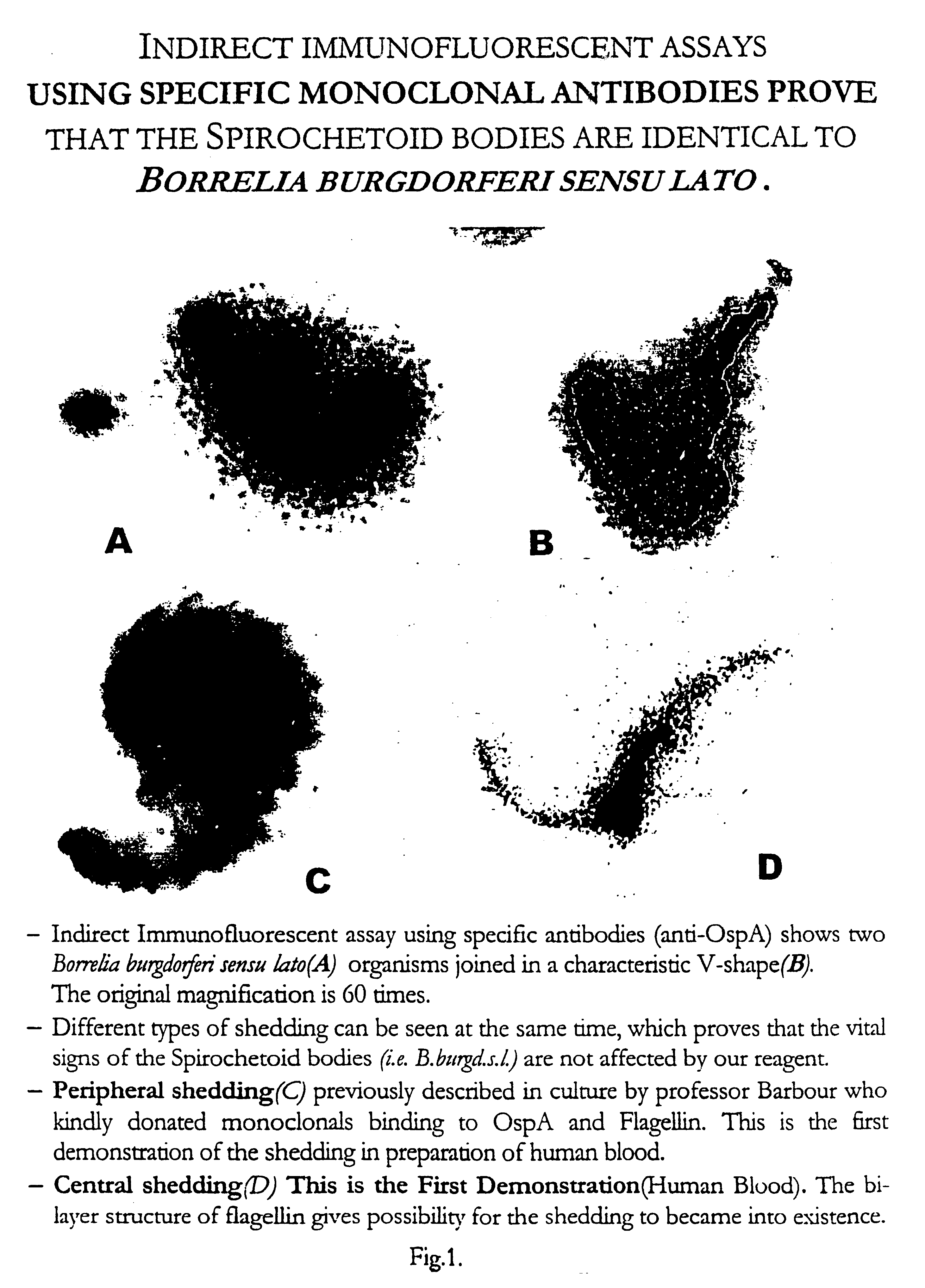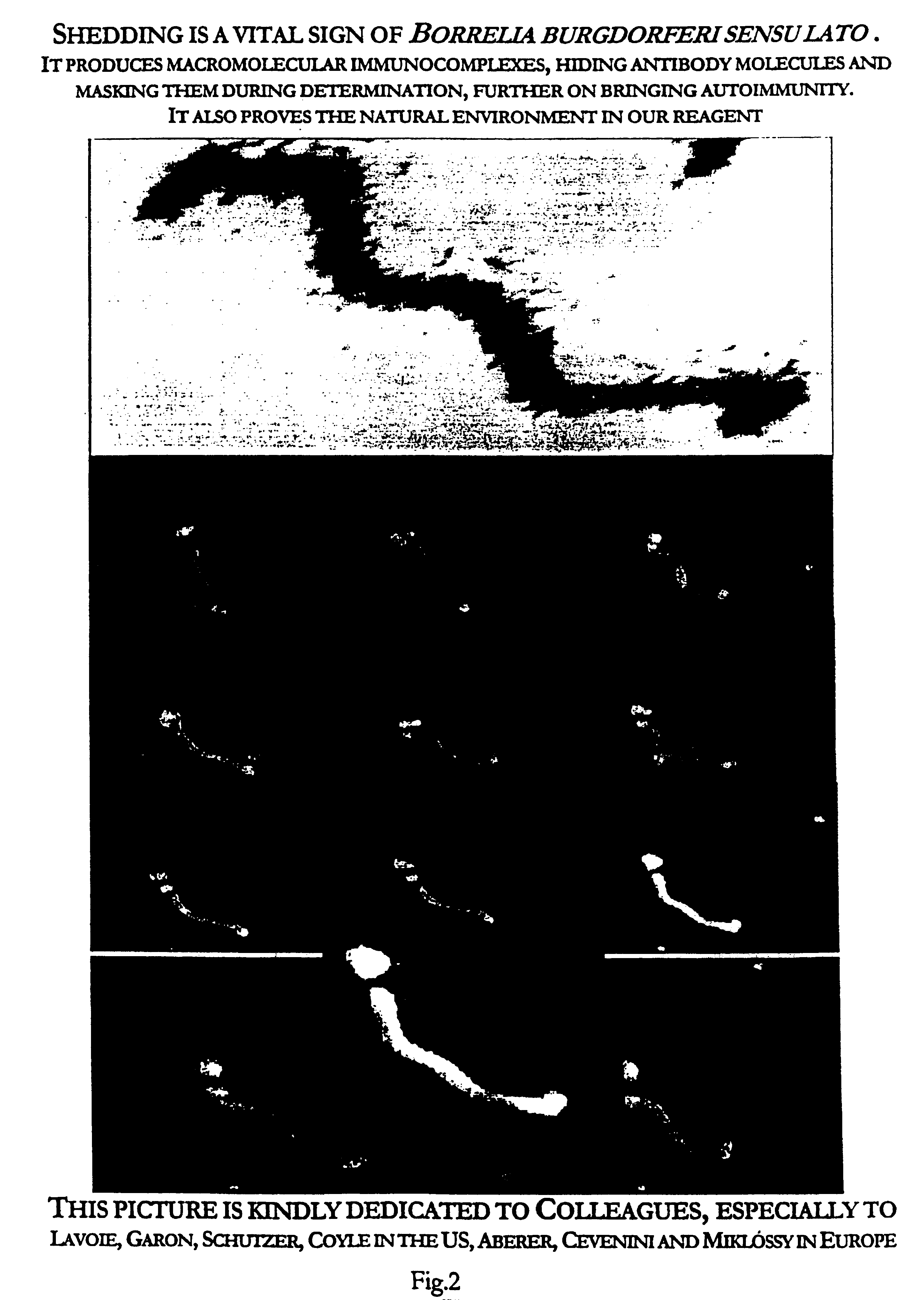Reagent and procedure for the detection of pathogens, especially spirochetes from body fluids
a technology of spirochetes and reagents, applied in the field of spirochetes from body fluids, can solve the problems of inability to detect changes using current techniques, tedious and most sophisticated, and inability to detect the extremely thin and long pathogens using conventional staining, etc., to achieve fast and reliable diagnosis and monitor treatment effects.
- Summary
- Abstract
- Description
- Claims
- Application Information
AI Technical Summary
Benefits of technology
Problems solved by technology
Method used
Image
Examples
example 1
Composition of the reagent: Hoechst 33342 dye, 1.00 mg / l, tetracain 200 mg / l, mannit 2000 mg / l, EGTA 0.76 mg / l, magnesium-chloride (containing 6 H.sub.2 O molecule), 0.61 mg / l, caffeine-sodium-benzoate 4000 mg / l, tri-sodium-citrate 10000 mg / l, glucose 20000 mg / l, glycerol (87%) 105 mg / l, distilled water 30 ml, RPMI 1640 culture to make 100 ml (pH=7.25; .mu.=2.10)
example 2
The ingredients are essentially the same as in Example 1 but the ingredients of the culture media are also listed. The reagent thus contains the following ingredients:
example 3
3.0 milliliters of the invented reagent are added to 7.0 milliliters of a human blood sample or a maximum of 10.0 milliliters of a human body fluid sample. The sample is shaken and incubated at +4 degrees Celsius for 120 minutes. The sample is then stored for a maximum of 24 to 72 hours. Double centrifugation is then performed at +4 degrees Celsius. First, the sample is centrifuged at 800 g for 10 minutes. The supernatant can then be filtered before it is concentrated at 20,000 g for 20 minutes. A seven milliliter sample yields a concentrated precipitate of 10 microliters, of which three microliters are examined under the microscope.
PUM
 Login to View More
Login to View More Abstract
Description
Claims
Application Information
 Login to View More
Login to View More - R&D Engineer
- R&D Manager
- IP Professional
- Industry Leading Data Capabilities
- Powerful AI technology
- Patent DNA Extraction
Browse by: Latest US Patents, China's latest patents, Technical Efficacy Thesaurus, Application Domain, Technology Topic, Popular Technical Reports.
© 2024 PatSnap. All rights reserved.Legal|Privacy policy|Modern Slavery Act Transparency Statement|Sitemap|About US| Contact US: help@patsnap.com










